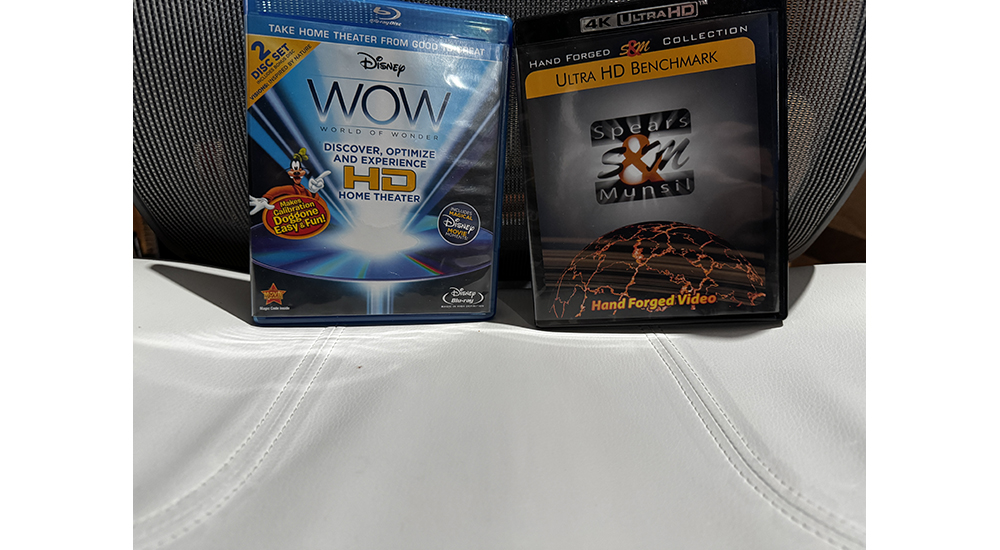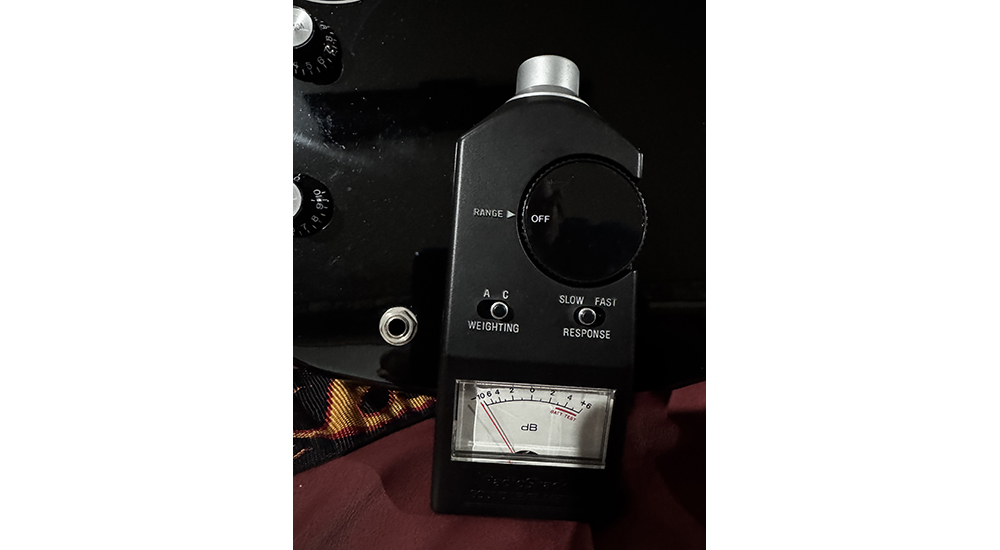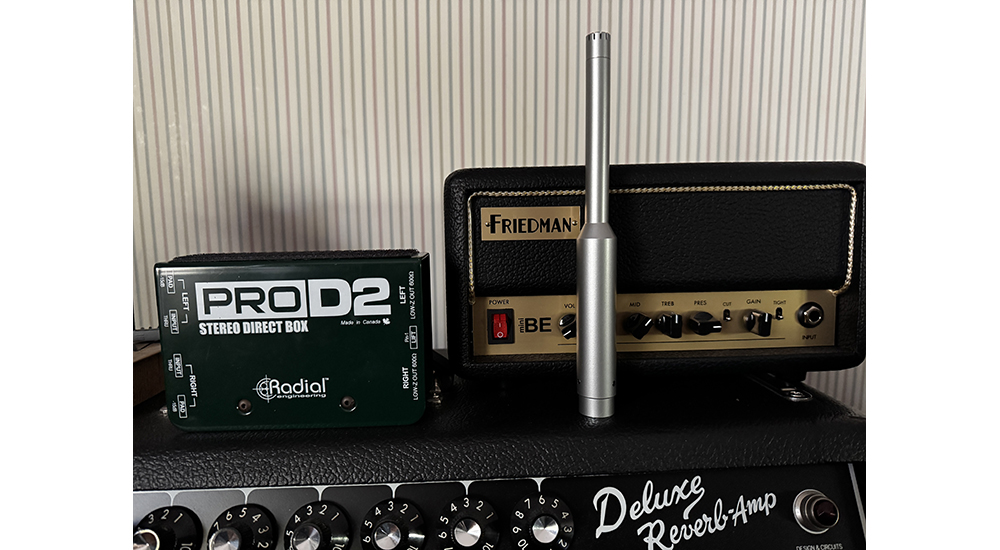It could be said these are the golden days of home AV. Formats such as 4K, HDR, and the emergence of 8K on the video side, along with immersive audio formats like Dolby Atmos and DTS:X are capable of delivering true cinema experiences. Despite the wide availability of these formats and technologies, though, there is a problem that still exists within the residential AV market—the lack of system calibration.
As advanced as these formats and technologies are, it takes more than new speakers, AV receivers, and other components to create a system that can meet its performance threshold. Proper speaker layout and system calibration are pieces that are often overlooked but are essential to maximize performance.
So with modern home AV’s array of state-of-the-art formats, along with components that are engineered to provide high levels of performance that offer homeowners a wide selection of products at a variety of price points proper calibration can be seen as another simple investment into locking in the true entertainment value of a system.
Why Home AV Calibration is Important
Gerry Lemay, director of the Home Acoustics Alliance (HAA), says the concept of calibration dates to the audiophile era, but not surprisingly most people don’t understand the importance of home AV calibration.
“I recall that when I brought up the subject of calibrating a home system most were mystified. Even some dealers. Back then only audiophiles understood the benefits of the time and thoughtfulness of carefully moving speakers to optimize the sound. They heard it and they respected folks who had the skills and ears to make it sound amazing. When Dolby introduced Surround and then Pro-Logic there were suddenly extra controls in AVR menus that required an SPL meter and a measuring tape. I was still surprised at how many folks did not adjust them. Even some dealers,” says Lemay.
“Today with Dolby Atmos, DTS:X-Pro, etc. the process has come of age. I’ve never seen so many technicians who advertise their calibration services. Getting it right always mattered, but with new very sophisticated analysis tools there is much more precision. Manufacturers have been adding more tools like equalization to their menus and they can’t usually be calibrated by ear. Of course, the time-honored skill of moving speakers is still a thing. Now, since most speakers today are built in, it’s important to get some advice or even hire a designer who can make sure the constellation of speakers in an immersive system are installed in the optimized locations.”
Joel Silver, CEO and lead developer, ISF, asserts the average guy should at the very least research to see what product reviewers are doing to put TVs in the best operational mode, as well as the setting of backlighting levels, and metadata that feeds the TV.
“Malpractice is when a dealer hangs a TV and throws speakers into a room. With the progress that has been made, you don’t need to be a calibrator to get a decent picture, but it will be good,” suggests Silver.
“If you have gear it will be great. The gear that comes with AVRs is good enough for level I [CTA/CEDIA-CEB23-B Home Theater Video Design guidelines] but not setting levels is disgraceful. Now that the manufacturers have stepped up and given us modes that are close to calibration it’s malpractice not to do the basic functions. You owe it to your customer to do the basics. They are trusting you to do the right thing, don’t let them [customers] down.”
Simple Tips to Better Calibrate AV Systems
Stepping back for a moment, Silver emphasizes that now is a great time in the world of home entertainment. Stressing the amount of quality content available from the many streaming services, as well as physical media, and platforms such as Kaleidescape, which offers lossless content, there’s a wealth of entertainment options available and if dealers take a few minutes, they can enable their clients to maximize their viewing experiences with that content.
Following CEB-23 guides Silver continues by pointing out that dealers can maximize their installations by determining factors such as screen size from the location of homeowners’ seating. For example, he says that seating locations ranging from nine to 10 feet should have a screen size at a minimum of 77 inches to help create an immersive viewing experience.
As a general recommendation he says that all TVs regardless of the make, size or model should look the same. Silver also recommends paying attention to the light output of a TV and the environment the TV will reside.
“If there is any doubt make the TV brighter, but in darker rooms don’t make the TVs overly bright,” adds Silver. “Place light around the room but not on the screen. You should see the lighting, but not the light source. You don’t want to see the light bouncing off the screen. Your eye will adapt, and it will fatigue. Put lighting in that makes sense.”
Silver also tells dealers to at the very least to look at the settings product reviewers are using and implementing their recommended settings.
Using Automated Equalization for AV Calibration
According to Lemay, one of the most frequently asked questions he receives during his educational seminars relates to automated equalization (EQ). Answering this question, he says with ambiguousness, the answer depends on the experience.
“Often other students point out their successes and difficulties with these devices. All can do a good job of smoothing the frequency response, but at times there are other factors involved. For example, one improvement in the automated systems is that they allow the user to pick their targets. This means that they employ the device to operate on a limited portion of the frequency range,” Lemay elaborates.
“This is important because it can change the character of your speakers, perhaps not to your liking. There is a defined range of frequencies that are not distorted in a room usually above 300 to 500 Hz. That means that any adjustment in that range is a preference not a correction. As I said the automated EQ makers have adapted to this reality and offer an informed user the option of selecting a range of frequencies. That is the issue with experience, you need to know about this to get the most out of the device.”
Calibration Tools to get the Job Done
Video Calibration Tools
Stepping up into some of the more reasonably priced calibration video tools that are available, there are solutions such as the latest version of the Spears & Munsil calibration disc. To use this tool, a system will need a disc player to play the disc, but the package offers a wealth of test patterns and other media.

If a disc player is not available Silver points out that Murideo offers free ISF test patterns that are available for download. These patterns can be placed on a thumb drive and used to set basic functions such as brightness and contrast levels.
Audio Calibration Tools
On the audio side of home AV calibration, both the Apple and Google Stores offer a large choice of SPL meters (sound pressure level) meters and RTA (real-time analyzer) apps, including the popular AudioTools app, which is available for free. The AudioTools app offers free SPL and RTA tools, and there are in-app purchase options to add more test tools for more in-depth testing.
Moreover, for those that want a physical meter to hold, retailers such as Guitar Center and Amazon offer SPL meters that range in cost from about $25 to $160. These apps and meters can be used in conjunction with the test tones built into AV receivers and processors to calibrate the audio levels in a home AV system.
Additionally, there are companies like Studio Six Digital that offer an array of hardware components such as calibration microphones and microphone preamplifiers that can be used in tandem with the AudioTools app for those that want to measure with tools more sophisticated than the microphones built into smartphones.
Professional-Grade Calibration Tools
Anyone wanting to make a larger investment into the calibration process, particularly to bring their home video installations to the next level, there are several choices there as well.
Jason Dustal, senior field specialist for MadVR Labs, and international trainer for ISF, points out that years ago the cost for calibration tools was beyond the means of many new dealers and AV enthusiasts.
Today, thankfully he continues, there are options for integrators and enthusiasts that are reasonably priced:
- Portrait Displays offers a package that includes the enthusiast version of Calman, a pattern generator, and a colorimeter.
- Light Illusion/ColourSpace has a great software package that works well for beginners. The cost is low, but keep in mind this is software only. Hardware will need to be purchased separately. There is not a “workflow” that walks you through it like Calman, but it is great software that is easy to use once users figure it out, he notes.
Where to Get Calibration Training
Dustal adds once a dealer or enthusiast acquires their calibration tools there are a choice of educational solutions to learn how to use these tools. Industry organizations such as CEDIA, HAA, Image Science Foundation (ISF), Consumer Technology Association (CTA) and THX all offer AV calibration courses.
“Training is available during ISF classes, and for the folks who are more tech inclined that will research, there is enough information to figure it out on their own,” says Dustal. “In either case, Portrait and ColourSpace both have helpful guides on their website.”
Lemay suggests the HAA curriculum is flexible to allow students to use whatever tools they are comfortable using to accomplish their calibration goals.
“I try to be agnostic about analysis tools. Frankly, there are many suitable tools and Room EQ Wizard or REW is the most used as it basically free. For our students though we acknowledge that simply handing them a Real Time Analyzer or other tool requires a framework. Gathering the correct data and then using it to make the right decision is not something that is an obvious process. For that reason, HAA has partnered with Studio Six Digital and created a focused version of AudioTools, their signature analysis package,” adds Lemay.
“It is available as an in-app purchase inside AudioTools. The HAA App is for the integrator who calibrates with purpose but doesn’t calibrate every week or even every month. It’s based on the HAA PowerCal and TurboCal checklists we provide graduates. It leads the calibrator through the checklist and if a measurement is needed it’s right there on the screen ready to be used. That and some help files reminiscent of the HAA class. Studio Six has also created an HAA Kit which has all the hardware [mics, interface, etc. required by a professional audio calibrator in an impressive case.”
Looking at some of these home AV educational seminars, here are some brief descriptions of the other learning opportunities:
HAA Courses
HAA focuses on the audio side of the home AV equation, while the ISF focuses on the video side of home theater and home video.
Lemay points out the HAA provides two elements to integrators:
- A Source for the latest knowledge on small-room acoustics, including system design and calibration.
- Hands-on training or “ears-on training”
The long-time home AV educator states that many integrators have never heard the difference between a system and a scientifically designed and carefully calibrated system. That’s the payoff and I’m proud to say that most students say the class was worth every penny.
“I often ask the students, as an analogy, how much improvement is there when viewing a projector 1% out of focus versus perfect focus,” he says. “Any integrator knows the improvement is incalculable. If it were that easy to focus an audio system, we’d all be audiophiles and HAA wouldn’t exist.”
HAA Level One (HT1 Certification)
This online class teaches the fundamentals of proper Home Theater acoustical design principles providing the central requirements of a high-performance design based upon state-of-the-art scientific research and extensive field experience. It is presented by CEDIA and must be completed prior to the in-person portion of the class.
The concept of the “Acoustical Framework” is introduced as the central design concept explaining the importance of all acoustical elements in achieving a delicate balance based on their inter- dependency. The list of guiding metrics of design success are also introduced with discussions of how the acoustical framework and acoustical treatment strategy can be understood to be the central controls of performance. The course lays the groundwork for more advanced understanding of small room acoustics by introducing the student to the most important industry acoustical terms and their technical descriptions providing an important grounding for the professional.

HAA Level Two and TurboCal Workshop (HT2 Certification)
This in-person class is an advanced how-to design/calibrate class evenly split between classroom training and a hands-on workshop. While created for integrators, it is great for designers, project managers, and even enthusiasts. The class leverages the home theater design principles introduced in the HT Adviser class with more technical explanations and examples. It discusses acoustical principles to create a deeper understanding of HAA design standards aiming to prepare the student with better problem-solving skills. The class includes the HAA TurboCal Workshop designed to start you running with an efficient and practical audio calibration process; we will calibrate a live system during the workshop.
HAA Level Three (HT3 Certification)
This in-person workshop is an all-hands-on session designed to bring all the prerequisite training to the test. This class pulls all the information and techniques from the prerequisite classes into a review and cements the concepts for the most complete understanding. The student is teamed with no more than five others who are tasked to incrementally design and calibrate a high-performance system. Nothing less than amazing results is allowed. The team is asked to complete the HAA PowerCal process including several instructor-led learning sessions conducted with an audio system. Students will understand subwoofer placement, room modal analysis, speaker/seating placement and acoustical treatment design from both a theoretical and experiential point of view.
ISF Courses
The ISF also offers a range of home AV classes. Focusing on the ISF Workshop schedule, which is held throughout the year in St. Petersburg, Fla., at the AVPro South headquarters, the organization has added Dolby Laboratories certification in 2025.
The $999 Level 1 course features a streamlined format, which participants can take part at the own pace online and then receive two days of hands-on training. Jason Dustal is the class instructor.
Beyond ISF’s Level 1 course is Level II. ISF stipulates participants must complete ISF certification training or take part in a combination Level I and Level II training courses. In this home AV training seminar, there is a focus on hands-on training using software tools for advanced calibration, as well as EEDID/HDMI verification, 3D color management, multipoint color balance, system building diagnosis, gamma/EOTF, and gamut matching.
CEDIA Courses
CEDIA also offers home AV calibration courses, which can be explore more here.
More news from CE Pro: ISF and CEDIA Revolutionize Calibration Training Via CEDIA Academy Courses







